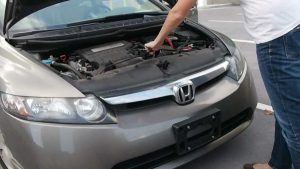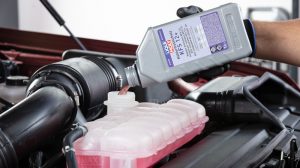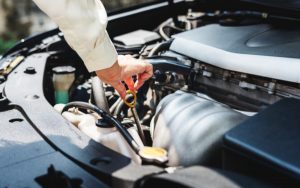Owning that first car, and not having to rely on anyone else to get you to where you need to go, is a true rite of passage. However, as Spiderman’s Uncle Ben said: “With great power comes great responsibility”. Owning a car is a great responsibility, and maintaining it should be a priority.
Keeping your car in tip-top condition is as important while you are driving it, as it is when the time comes to sell it. A properly maintained car, and one with a complete and detailed service history, will always be more valuable than one that’s poorly looked after. The first item of business for any dealership or prospective buyer at trade-in or sale time, is a car’s service book, and some might dismiss a car completely if the service history is incomplete or patchy. Have a look at the second-hand cars for sale on any reputable dealer’s website and the term ‘FSH’, or Full Service History, is often listed ahead of any other features or extras.

Also read: Driver’s Guide to Helping your Car’s Tyres Save You Money on Fuel
If you’re unsure of how to take care of your car, check out the tips below for a guide on factors you, as the consumer, should understand when it comes to servicing your car. Though these may differ slightly from car to car, every vehicle on the road comes with a manufacturer’s recommended service schedule. These are generally in the form of time and distance intervals between workshop visits, such as ‘one year or 15,000km’, whichever comes first, as an example.
It’s important to know that adhering to these intervals is not optional, and especially not on cars that are still covered by warranties. Skipping a scheduled service can have serious repercussions, such as the voiding of warranties or even mechanical failure.
Familiarise yourself with your car’s schedule in order to prepare for upcoming services, whether your car is covered by a service/maintenance plan or not. This can generally be found in the physical or digital service book that comes with the car, and should be stored somewhere for safekeeping.

Find the best prices on car parts and accessories online with PriceCheck now:
Some vehicle models indicate and record service schedules digitally within their infotainment systems. Also, some cars have built-in service timers to notify you ahead of the scheduled maintenance work, but it’s always better to check than to rely only on these. If you struggle to understand your schedule, or have trouble finding it, call the service department at your dealership to ask for assistance. Have your car’s current mileage and the details of the last known service handy, as this will assist them in guiding you.
It’s also a good idea to have your car’s Vehicle Identification Number (VIN) on hand, as this is the quickest way for a dealership to identify the specifics of your particular vehicle model. This can be found on your licence disc, or stamped onto the body of your car — often, but not always, visible through the bottom corner of the windscreen.
Getting back to the regular maintenance of your vehicle, there are three basic categories of a car service to consider:

Also read: Buying Guide: Where to Buy Car Batteries in SA
Basic service — this type of service is the most common and is routinely performed. In most cases it includes an oil change and oil filter, air filter and fluid checks, and is usually scheduled at 10,000km or 15,000km intervals. However, you should always refer to your car’s service book or speak to your Original Equipment Manufacturer (OEM) franchise dealer for information.
Advanced service — this service is generally set at further distance and time intervals, and can include the replacement of spark plugs, fuel filter, and pollen (cabin air) filters among other things.
Major service — This is performed at even greater time and distance intervals. Major services can include the replacement of critical items such as timing belts and/or timing chains, and a detailed inspection of various mechanical components in your vehicle.

Aside from the actual work performed, a service is also an opportunity for the technician or mechanic to inspect things that you as the owner may not be aware of. Compare it to a visit to the doctor: you can either go when you have an illness, or you can go for a regular check-up and see if they pick up a problem. As the saying goes, prevention is often better than cure, and this can apply to both people and cars.
Servicing your vehicle on a regular basis means that you will always be aware of the condition of your vehicle. For example, you may not know if your car needs a new wheel bearing or shock absorber, or that your brakes are nearing replacement time. Regular services allow the technician or mechanic to check for and inform you of any issue before it becomes costly to replace or even fails completely, which could place both the vehicle and your safety on the road at risk. Mitigating risk at every turn is your responsibility as a vehicle owner.
Find the best prices on car parts and accessories online with PriceCheck now:





